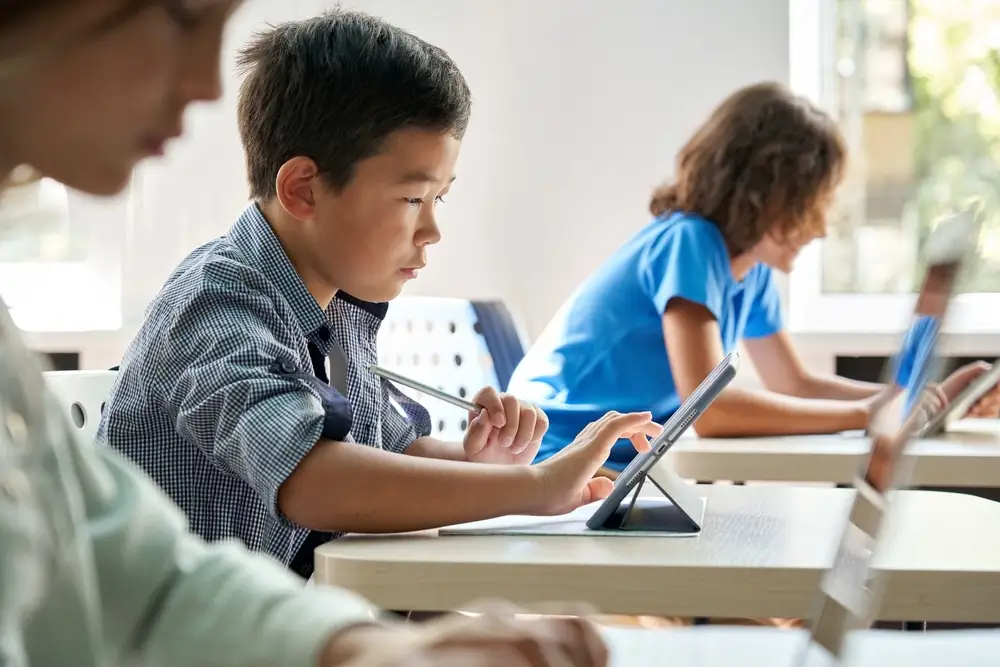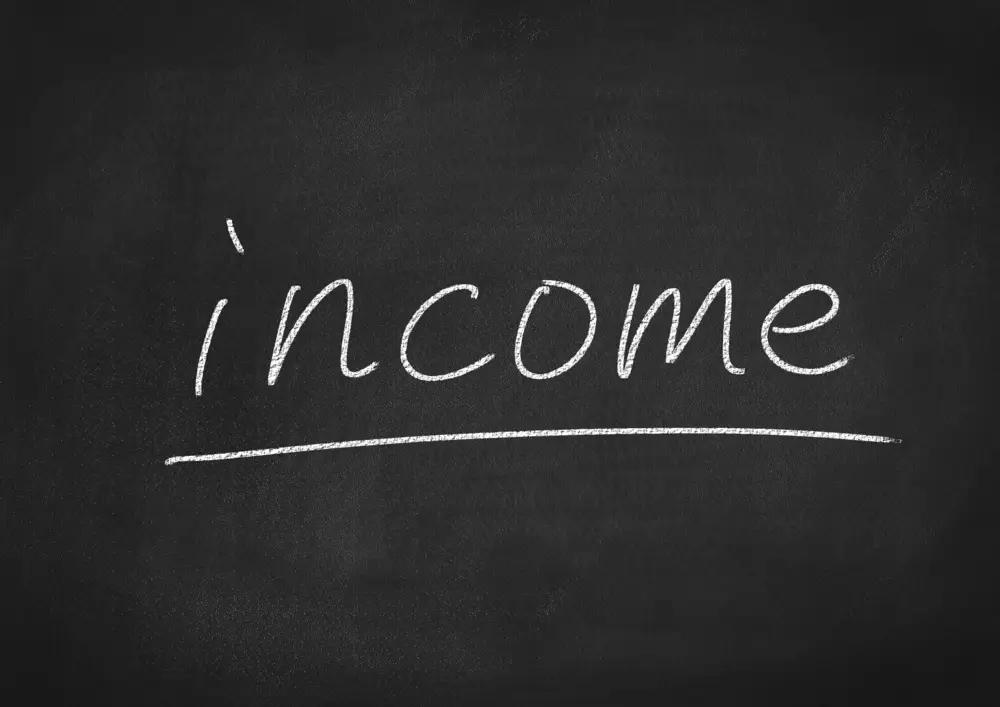Back to School Recap: Buying Trends That Set the Tone for the 2025 Holiday Retail Season
The back to school season can highlight a lot about consumer attitudes. Many observers see this as a precursor of the big Christmas buying frenzy. Families rushing for clothes, computing devices, and school supplies shows traces of more general shopping energy. This year’s back to school season arrived amid changing consumer behavior and increasing reliance on online buying. For the approaching holiday season, these trends provide insightful information.
In 2023, inflation stayed a regular worry as consumers balanced value versus brand loyalty. Before visiting stores, they also invested more time investigating items online. That behavior persisted into their choice of final purchases. Retailers who provided flexible purchase alternatives thus clearly benefited.
In the sections that follow, we will break down:
- A complete review of back to school expenditure for 2023/2025
- Views on how those patterns forecast hot items for Holiday Season 2025.
- Estimates of consumer purchase trends throughout the busiest holiday weeks
- Advice on strategy for companies seeking to take a larger share of the holiday industry
Section 1: Back to School 2024/2025 Recap
1.1. Spending Habits & Consumer Confidence
Consumer spending clearly changed in back to school 2023/2025. Particularly with gadgets, many households paid more per child. Parents sought premium technology tools capable of managing hybrid learning or distant learning. In several product categories, this demand raised typical price points.
Inflation also affected school supply budgets in homes. Customers used several payment options, including buy-now-pay-later arrangements, and spent more time weighing costs. Many customers funded tablets and laptops to help with significant upfront expenses. Even if some consumers were worried about growing interest rates, credit card use stayed strong.
Furthermore intriguing was the trend in basket sizes. Early buyers typically loaded non-educational goods into their baskets. They reached for kitchen basics or home office items. This exposed a fresh cross-category spending pattern. Retailers that carefully selected products took advantage of this inclination to mix errands into fewer visits.
Though it varied among groups, consumer confidence stayed strong. While older parents indicated worry, younger parents generally expressed hope about the economy. While some homes felt pressured by inflation, others felt free to indulge in luxury brand purchases. These different points of view indicated an inconsistent but steady readiness to spend when offers were reasonable.

1.2. Popular Categories During Back to School Recap
The list of must-have back to school items mostly comprised technology. Parents gave nice laptops, tablets, headphones, even wearable devices top priority. Students looked for tools that would satisfy their enjoyment as well as academic needs. Among consumers in high school and college, high-performance tablets were clear bestsellers.
Still indispensible are stationery and conventional classroom supplies. Many parents, meantime, mixed modern selections with useful objects. Stylish design notebooks and planners become somewhat well-known in Lines of environmentally friendly paper products also experienced increase. Reflecting a growing awareness of sustainability, several families favored notebooks created from recycled materials.
Compared to last year, apparel witnessed a little increase. While everyday clothes and uniforms stayed the same, sportswear and athleisure trended upward. Students yearned for cozy clothing that functioned as fitness gear. This inclination aligned with the continuous movement toward flexible schedules. Particularly good were casual pieces that provided comfort and flair.
Backpacks mirrored this shift as well. Many parents went for adaptable purses including several pockets and laptop sections. Products they sought might fit school, extracurricular activities, and quick weekend vacations. Companies that promoted “all-in-one” capability noticed more sales and positive consumer comments.
1.3. Shift to E-Commerce & Omnichannel
During back to school recap 2023/2025 online buying kept rising. Parents prized digital discounts, more product availability, and ease of use. Retailers answered by enhancing mobile apps and website capability. Many ran time-limited specials meant to generate quick clicks. For families in a rush especially, this strategy raised average order values.
Also quite popular was BOPIS, Buy Online, Pick Up In Store. Ordering from their phones and grabbing things curbside proved handy for consumers. They enjoyed cutting any delays and eliminating delivery costs. Retailers who created effective in-store pickup points attracted returning business. These consumers valued the seamless flow between online research and offline fulfillment.
Differentiating oneself in a congested market proved mostly dependent on omnichannel strategies. Some stores started online backpack or apparel try-on tools. Others paid for real-time inventory tracking to guarantee correct stock levels across several outlets. Less friction results from improved integration of online and in-store experiences. These initiatives enabled stores to compete against often price-cutting solely online behemoths.
These effective back to school plans hint to what the Holiday Season 2025 could look like. Retailers have to change as customers grow more at ease combining physical and digital buying. Holiday buying choices will continue to be shaped by new technologies and a more keen attention on consumer convenience.
Section 2: How Back to School Trends Predict Holiday Season 2025
2.1. Early Promotions & Consumer Expectations
Early back to school specials create an urgent attitude. Many customers snatched offers before official start dates of classes. This excitement could change to fit the holidays. Consumers will probably start looking for discounts weeks in advance. Early back to school sales offered by retailers showed increased sales data. Early Black Friday or Cyber Monday campaigns could be influenced by same approach.
Economic uncertainty can potentially accentuate this trend. Growing expenses force consumers to strain their means. Those who huddled for reduced rates on basic school supplies would keep doing the same for holidays. We might then see longer marketing windows in turn. In October or perhaps late September, businesses could launch holiday sales in an effort to appeal to consumers on a tighter budget.
Moreover, consumers who went crazy for school supplies might make holiday present plans ahead. They most certainly will register for discount apps and deal notifications. Companies who understand financial worries will draw more devotion. Still absolutely important are open pricing, adaptable payment methods, and loyalty bonuses.

2.2. Key Demographic Insights
Spending for back to school revealed interesting demographic groups. Families having elementary to high-school children were very important, but so were college students. These college-aged customers lavished freely on devices, dorm supplies, and personal flair. Their tastes could guide the Holiday 2025 Hot Retail Products industry. Tech-savvy people search for cutting-edge electronics, gaming consoles, and smart homes most of the time.
Still another significant group are millennial parents. They usually like flawless purchasing experiences and balance limited schedules. Also, they value well chosen gift tips and customized advice. They value authenticity as well. This segment finds resonance in real brand stories and influencer sponsorships. A brand can guarantee repeat holiday buying if it can inspire confidence and ease of use.
Teenagers from Generation Z demonstrated an increasing curiosity in hip, eco-friendly products. Social issues and brand ethics really excite them. They give environmental packaging and charity brand alliances great thought. Over the holidays, they could search for presents consistent with their principles. Companies who take care of the environment or tackle social concerns will stand out. Parents with similar beliefs can also find attraction in this strategy.
2.3. Tech & Innovation Influences
This back to school recap season, advanced digital technologies took front stage. Retailers let pupils see how shoes or backpacks might fit using augmented reality (AR). Artificial intelligence (AI) also came to suggest appropriate stationery packages or gadget devices. This tailored strategy increased client confidence.
These similar ideas will be important for Christmas buying. Before adding gifts to carts, more customers will want to virtually preview them. Retailers might include AR into fashion, home goods, or holiday décor. AI-powered chatbots could manage explosive consumer questions. Drawing on user profiles, they can create customized gift recommendations. Real-time inventory inspections handled by this system can also help to avoid order cancellements.
During back to school recap, social media stars offered real-time product demos. These people presented products during live streaming events. Using integrated links, users were invited to “buy now.” This method combines instant purchase with entertainment. For holiday specials, expect even more visibility. Influencers will probably feature “hot holiday items” on short video clips and livestreams. These campaigns will appeal to consumers seeking simplicity, genuineness, and spontaneity.
Section 3: Holiday Season 2025 Hot Items Prediction
We will look at items that will probably rule the Christmas wish lists in this vital part. We will also consider growing concerns including inclusiveness and sustainability. These forecasts reflect changing consumer requirements and lessons learned from back to school purchasing. By identifying these categories, we can help stores trying to inventory the appropriate goods.
3.1. Tech Gadgets & Smart Devices
Still a major competitor for Christmas presents is technology. Back to school recap demand for computers and tablets was strong. That momentum is probably going to last. Customers will keep looking for innovative gadgets that simplify their daily lives. Wearable devices—such as fitness trackers and smartwatches—remain much sought for. Many younger consumers wish to track health indicators and match them with phone apps.
Additionally booming will be smart home technology. Devices fit many gift-giving budgets including smart speakers, smart doorbells, and linked light systems. Voice-activated assistants interacting with other home appliances witness consistent expansion. Gamers will also hunt for fresh VR headsets or consoles. Advanced computers or specific accessories for eSports may be of particular interest to college students These products reflect continuous technological development, thus they fit the Holiday Season 2025 Hot Items Prediction.
Less tech-savvy consumers may find attraction in retailers who emphasize simple setup and useful benefits. Many times, families shun too complicated devices unless they clearly provide benefit. Product demos, easy-to-use manuals, or video guides can all help to allay fears. If you run a store, think about providing free tech assistance or long warranties. These add-ons could influence doubtful consumers to make purchases.

3.2. Sustainable & Eco-Friendly Products
Back to school recap revealed a strong environmentally mindful trend. Parents chose green lunchboxes, recycled-paper goods, and reusable water bottles. This kind of thinking is ready to affect holiday buying. More people will browse for environmentally friendly presents. Shoppers search for open supply chains and corporate accountability declarations. They seek comfort knowing that companies use moral standards and cut carbon footprints.
Giving categories such zero-waste kits, reusable home goods, or ethically produced clothes will appeal. Certain households will also find attraction for solar-powered chargers or green energy devices. Younger shoppers want their gifts to line up with environmental principles. Companies which provide charitable tie-ins, biodegradable packaging, or environmentally friendly wrap will stand out.
Retailers can also show lines of products created from recycled or organic materials. To underline their dedication to sustainability, they might team with environmental groups. Marketing communications should stress influence on the environment as well as style. Social conscious consumers looking for more meaningful gift ideas may find resonance in this approach.
3.3. Fashion & Apparel Trends
Back to school recap found great demand in cozy yet fashionable clothing. That pattern will last until the holidays. Gift-givers’ top choices still will be loungewear, athleisure, and flexible essentials. People appreciate pieces that fit at-home relaxing, social events, or business travel. The border between workplace attire from informal dress becomes increasingly hazy. Functional but trendy clothing will therefore probably be highly sought for.
A big part also is inclusive sizing. More range in their wardrobe choices is what many customers demand. Retailers with varied styles and extended sizes will develop brand loyalty. This change toward inclusivity also includes modest design, adaptable clothing for those with disabilities, and different body types. Companies who shine in this area will get positive feedback on social media.
Pop cultural impacts show up quickly. A viral TV show or musician could start a micro-trend in designs or prints. Popular culture cues should be something retailers focus on. Should a certain color scheme or pattern go viral, it can become a trendy holiday item. Additionally producing valuable items appealing to younger viewers through partnerships with TV shows or celebrities can help.
3.4. Toys, Games & Family Entertainment
Children’s accessory and educational toy sales surged throughout the back to school season. That trend suggests holiday hits for family-oriented entertainment. Still ageless choices are classic board games, puzzle kits, and interactive toys. Many families, meanwhile, value toys driven by technology nowadays. While teaching useful skills, interactive robot pets and coding kits inspire children’s imagination.
Also attracting interest are collectible things. Limited-edition runs of well-known TV series, gaming franchises, or movie worlds can turn into fast sell-offs. Demand for these special product lines is sometimes enhanced by social media buzz. Parents who seek to honor certain wishes could value rare collectibles especially.
For the Holiday 2025 Hot Retail Products Prediction USA, mix old and new. Electronic elements for current play could be included into classic board games. Companies in video games will release specialized Christmas bundles or expansions. Toy makers will include augmented reality or app integration to appeal to tech-savvy children.

Section 4: Marketing & Retail Strategies for the 2025 Holiday Season
4.1. Omnichannel Continuity
Retailers who survived during back to school recap discovered innovative methods to combine physical and digital outlets. First researching on their phones, consumers sampled items in-store. They finished their last purchases either online or in person. The holiday season will make even more important this flawless omnichannel approach.
Consumers want consistency from the app, internet, and actual stores of a business. They want fast delivery choices, simple returns, and accurate real-time inventory. When these components line up, customers feel more sure about their choices of purchase. This builds loyalty and motivates customers to return for Black Friday or Cyber Monday, two of the busiest holiday events.
Curbside pickup lets retailers improve omnichannel experiences. They can also provide frictionless returns, in which consumers drop off unwanted goods without waiting long times. Simplified procedures will draw time-pressed holiday buyers. Still must be faster checkout choices available online and in shops.
4.2. Data-Driven Personalization
Retailers learned a lot about consumers during back to school. They are aware of which promo codes worked best or which products became really popular. That information allows them to customize Christmas ads. Sending focused emails with related products can grab consumers’ interest once more.
Programs aimed toward loyalty also benefit. Early access to special offers will reward returning customers. Show a quick view of new collections or choices for extended warranties. Systems built on artificial intelligence can examine surfing and purchase behavior. They may then produce customized gift guides for every customer. This strategy helps clients to feel important. They respect the brand’s attempts to satisfy their own tastes.
Social media outlets should also show personalizing. Show products that customers browsed but did not purchase in retargeting advertising. Showcase client-generated content to boost legitimacy from happy consumers. Retailers with the correct data may predict which limited-edition items or seasonal bundles will pique curiosity. This approach can affect visits inside stores as well as online clicks.
4.3. Timing & Promotion Tactics
Window of holiday marketing keeps widening. As Halloween draws to a finish, stores could begin advertising holiday gift guides. For those who make forward plans, this strategy appeals. It also takes advantage of residual momentum from the back to school recap season. Early-bird offers, hinted at on social media, help to create buzz for more major events like Black Friday.
Still very important is Black Friday weekend. For e-commerce, Cyber Monday is also rather important. Some companies, meanwhile, now run week-long or month-long specials. They wish to calm the hysteria and grab sales from frugal consumers waiting for the greatest price. Retailers should play about with limited-time flash sales. These occurrences draw bargain seekers and create urgency.
Gift card offers may appeal to unsure gift-givers. Many parents or other relatives would rather let receivers select their own gifts. Giving gift cards bonus credit will raise the total final purchase value. That strategy invites consumers to choose your brand above others.

4.4. Influencer & Social Media Campaigns
Back to school recap included a lot of influencer marketing. Prominent people flaunted stationery advice, tech reviews, and clothing trends. Their sponsorships brought people to internet retailers. This strategy will just get more intense throughout the holidays. Consumers often search for honest comments and gift ideas among influencers.
Various venues serve diverse audiences. Short, appealing clips on TikHub let younger people discover it. Instagram attracts visually motivated consumers that value well chosen aesthetics. YouTube lets you include detailed product demos or unboxing movies. Target demographic will determine which influencers stores should choose. Moreover real and affordable are micro-influencers with dedicated specialties.
Referral codes, contests on social media, or prizes enable companies to extend their influence. They inspire user-generated content and provide thrill. Live streaming events allow brand reps and influencers to engage real-time with viewers. Consumers may ask inquiries and get quick responses. Greater conversion rates can follow from this sense of connection.
Conclusion
Season for back to school presents more than just new notebooks and backpacks. It tests more general consumer patterns that will define Holiday Season 2025. Spending trends seen during this time offer important new perspectives on how families will approach year-end purchasing. Strong demand for technology, growing interest in environmentally friendly products, and ongoing dedication to comfortable, practical clothing were evident.
These tastes will probably show up on the Holiday 2025 Hot Retail Products line-up. Beyond the things themselves, the shopping trip counts. Customers value companies who link offline and internet channels. They want openness, simplicity, and a bit of personalizing. Retailers who use data, improve their timing of promotions, and work with influencers stand to have a competitive edge.
Entering the hectic holiday season, stores can use a range of tactics. Early advertising and appeals to families on a tight budget can help them start Their ability to simplify omnichannel experiences helps to lower friction. They can also make personalizing investments, providing well chosen recommendations to discriminating consumers.
These realizations could direct the strategy of your business. Match your products to current trends and leverage statistics to create focused advertising. Above all, give consistent, customer-oriented purchasing experiences top importance. This will help you to meet the particular expectations of the festive audience.



